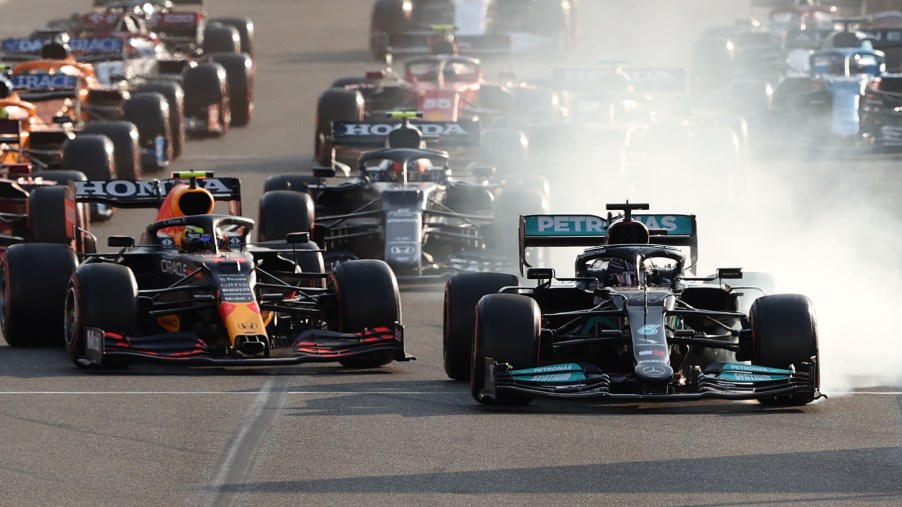
Lewis Hamilton: Are Formula 1 Cars at Odds With Sustainability Push?
Formula 1 isn’t exactly known for being green, but the company has been trying to change that in the past few years. There is a new push for sustainability in the sport, which has brought a lot of changes. But along with the changes means an increase in safety measures that ultimately protect the driver and the whole Formula 1 sport. If that’s the case, the heavier car seems worth it.
Lewis Hamilton, Formula 1, and the push for sustainability

RaceFans says that ahead of the 2022 Formula 1 season, the minimum weight of the cars is slated to increase to 1,741 pounds (790kg). That’s an increase of 83 pounds (38kg) over last year and 110 pounds (50kg) over the last three seasons. Formula 1 has set a goal of being a net-zero carbon producer by 2030, but are the cars going to be able to fall in line with that goal?
Lewis Hamilton, driver for the Mercedes-AMG Petronas Formula One Team, questioned whether or not this was the right decision. He noted that adding weight to the cars each year seems counterproductive to that goal. “I don’t understand particularly why we go heavier when there’s all this talk about being more sustainable, the sport going in that direction.”
Since 2014, the F1 cars have gained about 200 pounds (100kg) for various reasons. Many of these are safety-related, which makes sense, but are the cars gaining anything else?
The Formula 1 turbo hybrid car era
In 2014, the sport headed in a new direction. This was the start of the Formula 1 turbo hybrid era. Hamilton noted that he felt the cars back before the 2014 change were more agile and easier to drive. He also said the cars were not as big, making maneuvering around the track easier.
“On the tracks we’re going to, they’re getting wider, like [Baku] is quite wide and in places, of course it’s narrower, in other places. But Monaco was always relatively impossible to pass – now the car is so big that it’s too big for the track.”
Lewis Hamilton | RaceFans
Along with the cars being too wide for some tracks, the extra weight adds stress to the tires and brakes. This also means more energy on the track and even shuttling the cars to and from locations. Every other weekend, the cars, teams, drivers, and every other piece of equipment hike to a new location.
Perhaps some new technology companies like Porsche have been working on are the answer. The brand has been working on a carbon-neutral fuel that would help make the cars more “green” and efficient. That appears to be part of the change planned for 2025, but what sacrifices will be made for that? Is it weight, expense, or a slower car?
If safer F1 cars are the result, is that worth the weight?
The other side of the coin is about how extra weight is needed. The halo safety feature is a necessity these days to keep drivers safe. In fact, Romain Grosjean credits the halo device with saving his life. Formula 1 also added extra fuel for the new hybrid engines.
Before 2020, drivers had to remain under a certain weight. F1 increased the weight limit of the drivers to a minimum of 176 pounds along with the seat for that season. The cars have also been made of better materials for the 2021 season, over the uber-light carbon fiber previously used. This added weight but also made the cars more durable. There is another change ahead for the 2025 season and the new regulations.
It does seem that some parts of the sport have been moving in a different direction in the last few years. Will the next season bring a more harmonious meeting of sustainability and Formula 1 as we knew it? That might still be a few years off while the rest of the kinks get worked out behind the scenes.
This article was updated on 9/23/2022.



